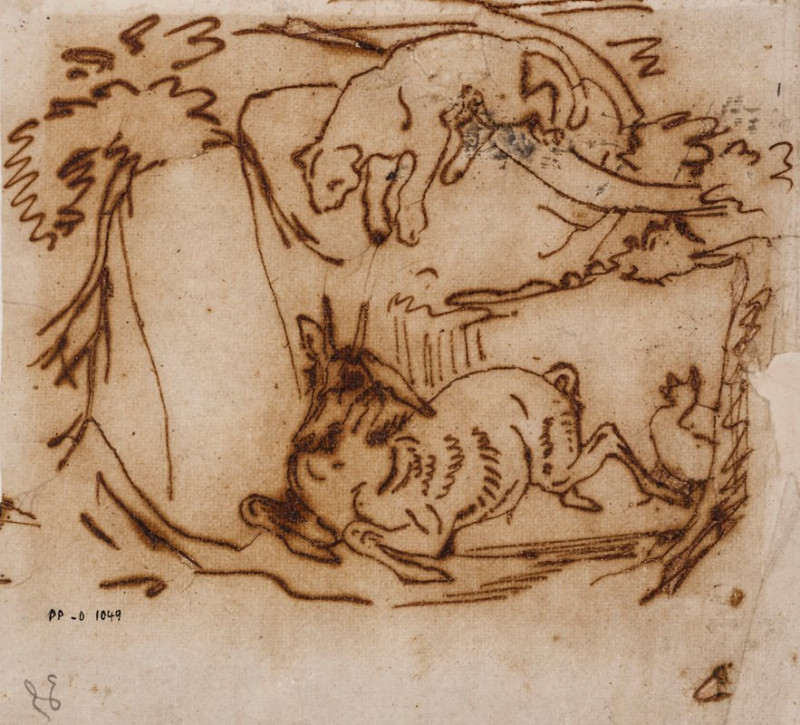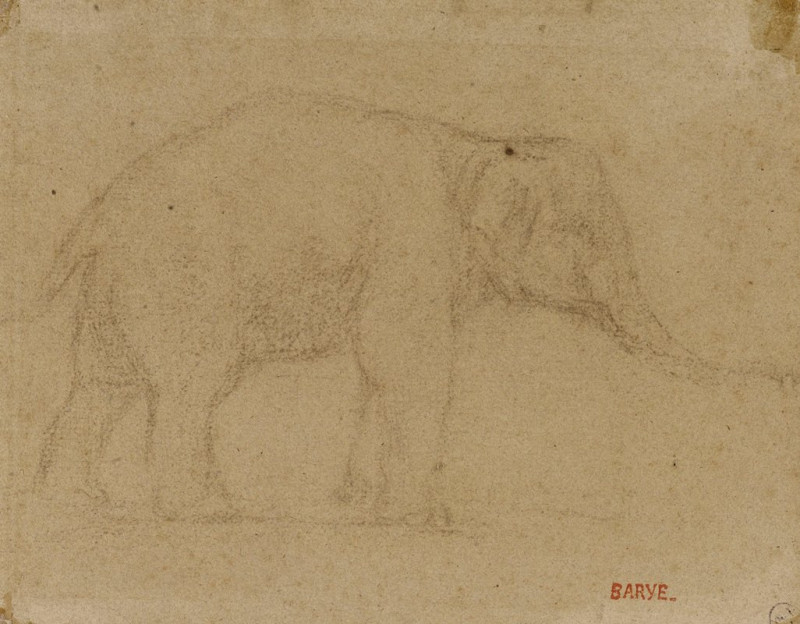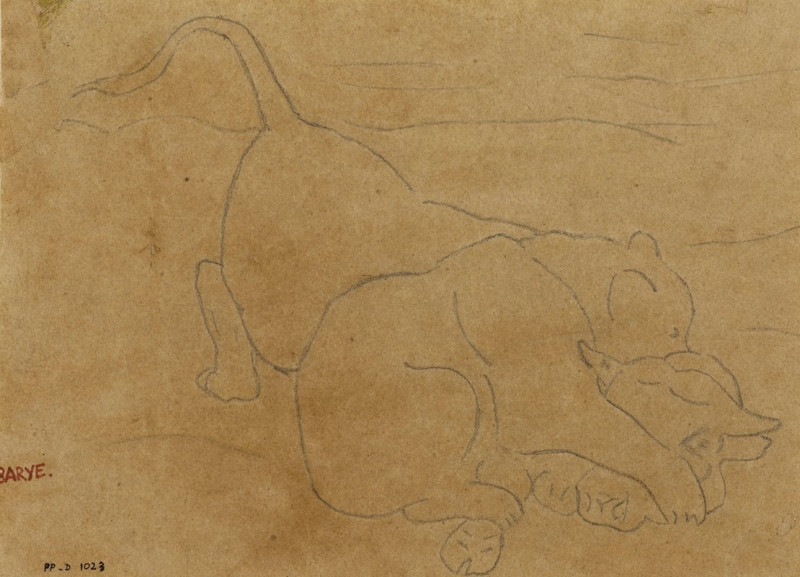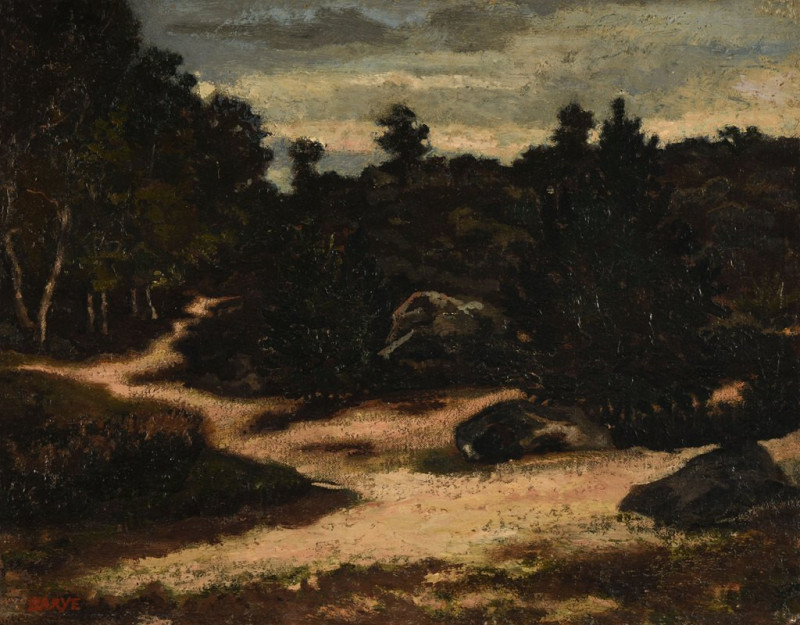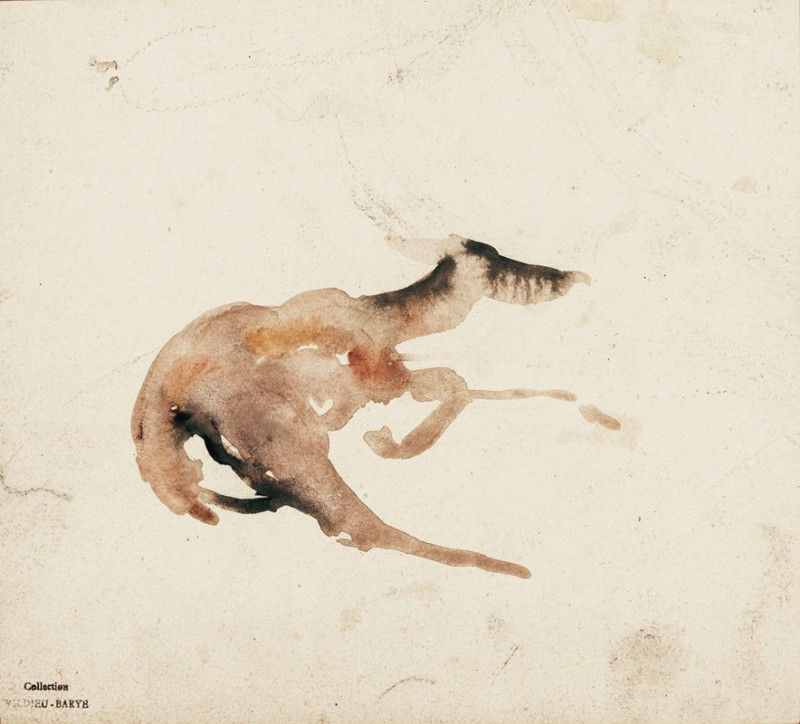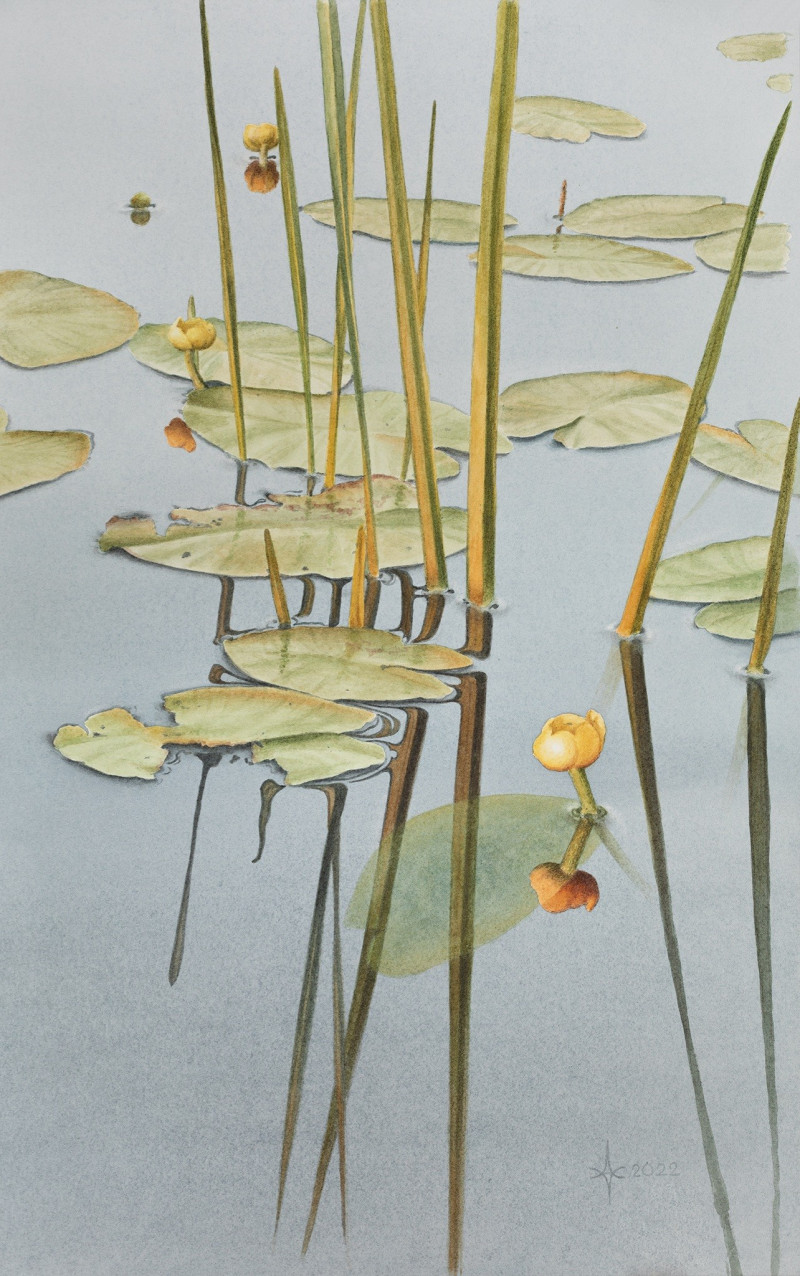Jaguar guettant une antilope (19th century)
Technique: Giclée quality print
Recommended by our customers
More about this artwork
In the captivating work "Jaguar guettant une antilope" by Antoine-Louis Barye, a tense and primal scene from the natural world is vividly captured in sepia tones. This 19th-century sketch depicts a jaguar in the midst of an intense moment, crouching with palpable tension as it prepares to ambush an unsuspecting antelope. The jaguar's body is coiled, its muscles taut, ready to spring into action, illustrating the raw power and agility of this formidable predator.The antelope, unaware of the imminent danger, is rendered with equal attention to detail, contributing to the drama of the piece. It grazes peacefully, its delicate body a stark contrast to the robust frame of the jaguar. This dramatic juxtaposition not only highlights the fragility of life in the wild but also underscores the harsh realities of survival.Barye's sketch, though simple in execution, is profound in its storytelling. The use of minimalistic lines and the unembellished style focuses the viewer's attention on the intensity of the moment rather than the surroundings.
Delivery
Reproductions are made to order and take 5 to 7 working days.
We send them out by courier and delivery takes another two working days.
If you need a reproduction sooner, please contact us - we can usually find a solution and produce it a little faster.
If you don't want to pay for postage, you can pick up your paintings at our galleries in Kaunas or Vilnius.
Returns
Yes, reproductions can be returned.
If you have any doubts more than 30 days after the date of purchase, please contact us - we will take the reproduction back for a refund or offer you a replacement!
We accept a maximum of two returns per customer - please note that we make reproductions to order, so please choose responsibly.
We do not refund shipping expenses.

